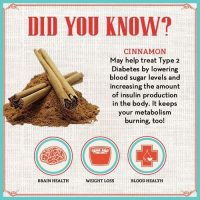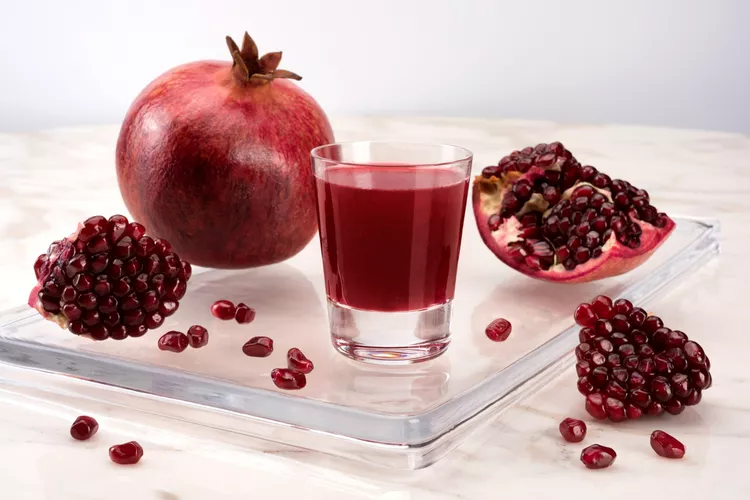Health
Cinnamon and diabetes: how to use it to lower your blood sugar level

Discover how to use Cinnamon for diabetes.
Why and how to use cinnamon to lower the level of sugar and fat in the blood?
Cinnamon, also known as “poor man’s insulin”, has long been known for its action on diabetes and cholesterol. Let’s see here why it is advisable to consume cinnamon when you have diabetes, and how to take cinnamon for an effective effect.
Be aware, however, that under no circumstances should you stop taking the medications prescribed by your doctor, and take advice from him if you want to take cinnamon.
This way to buy cinnamon, the aromatic bark of the cinnamon tree used in cooking and therefore as a natural remedy against diabetes.
What is diabetes?
Diabetes is chronic hyperglycemia, an excess of sugar in the blood causing blood sugar that is too high compared to the average. This excess of sugar is the consequence of poor assimilation, poor use and poor storage of sugars by the body.
Indeed, in a normal organism, the carbohydrates in the diet are transformed into glucose, the pancreas then detects the increase in blood sugar and will produce insulin.
This insulin helps glucose to enter body cells (muscles, organs, etc.) and the liver where it will be processed and stored. Blood sugar levels then decrease in the blood.
For people with diabetes, this regulatory system does not work and must be supported by injections of insulin through injections.
There are mainly two types of diabetes :
- Type 1 diabetes: or insulin-dependent diabetes, about 6% of diabetics. It is characterized by insufficient production of insulin.
- Type 2 diabetes: or non-insulin-dependent diabetes, 92% of diabetics. It is characterized by initially an insulin resistance of certain organs which prevent the entry of insulin.
This resistance to the action of insulin leads to an overproduction of insulin by the pancreas to compensate, a pancreas which gets tired and after twenty years, no longer produces enough insulin: this is the insulin deficiency.
You should know that this type of diabetes increases the risk of cardiovascular disease by 2 to 4 times (heart attack, high blood pressure, etc.).
Can cinnamon lower your blood sugar
A simple answer would be: yes! But let’s dig into the subject a bit.
To go further, find out what are the virtues of cinnamon.
For the little story :
It is a happy mistake that led Western researchers to find the effect of cinnamon on blood sugar (although this effect has been known for ages in Asia).
Indeed, we owe this discovery to Dr Richard A. Anderson, who originally studied the properties of chromium. USDA researcher, senior scientist at Beltsville Human Nutrition Research Center, Beltsville, and physician.
He has published over 230 scientific manuscripts and presented over 200 presentations at regional, national and international meetings around the world.
While studying the effects of chromium on diabetes, he realizes that apple pie stimulates insulin activity. No sense, the apple pie contains only a little chromium and a lot of sugar!
Anderson then thinks of the effect of apples, but quickly realizes that this effect is due to another ingredient in the pie… cinnamon!
The scientist will therefore focus his studies on the effects of cinnamon on diabetics. Many other scientists will follow, all convinced that cinnamon is the best hope for a natural cure for diabetes.
What evidence for the effect of cinnamon on diabetes?
Following Dr Anderson’s discovery, hundreds of studies are being conducted on the bark by hundreds of scientists. Finally, it is Dr Anderson who will publish in 2010, a scientific article taking stock of the 16 main studies on cinnamon.
Of these 16 studies, 11 show a significant effect of the spice, and 5 show little or no influence on the drop in blood sugar.
CASES WHERE CINNAMON HAS LITTLE OR NO EFFECT:
Regarding these latest inconclusive or inconclusive studies, patients were taking metformin, one of the most common treatments for type 2 diabetes.
According to Anderson: “Metformin acts like cinnamon, increasing insulin sensitivity. If you take enough metformin to manage blood sugar, cinnamon will not affect”.
The poor or inconclusive studies have shown no effect on young people with type 1 diabetes, a logical result, because people with type 1 diabetes have little or no insulin, and cinnamon is not a substitute for it. insulin.
A study has shown that cinnamon does not lower blood sugar levels in healthy people without any diabetes problem.
There are still studies, conducted on other patients that have not led to conclusive results.
CASES WHERE CINNAMON HAS A SIGNIFICANT EFFECT:
The most significant study was conducted by Dr Anderson with a team of researchers from the Peshawar School of Agriculture.
This study was carried out on 60 middle-aged patients suffering from type 2 diabetes, divided into 6 groups. Group 1 took 2 capsules of cinnamon per day, group 2 took 6 and group 3 took 12. The other groups had the same amounts of capsules, but a placebo.
Treatment was carried out for 40 days in all groups, and the capsules contained 500 mg of cinnamon (approximately 1/4 teaspoon). The patients ate as usual while taking their diabetes medication, but not metformin.
The result: in the groups taking cinnamon, there was a drop in blood sugar levels of 18 to 29%. We also observed a drop in triglycerides from 23 to 30%, in total cholesterol from 13 to 26%, and bad cholesterol (LDL cholesterol) from 10 to 24%.
A study conducted by researchers at the University of Pomona in California (USA) on 543 patients with type 2 diabetes arrived at the same conclusions, showing besides that cinnamon increases the level of good cholesterol (HDL).
How does cinnamon affect blood sugar
The magic compound that comes into play is called: polymer methylhydroxychalcone (MHCP), the most active compound in the bark.
Indeed, studies by Professor Anderson have shown that this substance increases the metabolism of glucose up to 20 times, the process which converts sugar into energy. As such, cinnamon is the ally of diets!
Cinnamon facilitates the work of insulin and therefore helps to get sugar into cells. As such, it would affect comparable to certain drugs such as thiazolidinediones (Actos®, Avandia®, etc.), which reduce insulin resistance.
Also, MHCP is a formidable antioxidant, from a class of polyphenols found in cocoa beans, which also has an impact on diabetes.
Antioxidants prevent the formation of free radicals, which damage the DNA of cells and which therefore lead to chronic diseases, including diabetes. There are many studies on the action of antioxidants on diabetes and cholesterol reduction.
What variety of cinnamon for diabetes?
As I explain in our article on how to lose weight with cinnamon, there are two varieties, which come from the bark of two very similar but different tree species:
- Cinnamomum Verum, known as Ceylon cinnamon, also known as real cinnamon,
- Cinnamomum aromaticum or Cinnamomum cassia, known as cinnamon from Indonesia or China, also known as false cinnamon.
Let’s be clear: when it comes to lowering blood sugar and cholesterol, variety doesn’t matter, they have the same effect. That said, for long term use, we still recommend Ceylon cinnamon.
Indeed, their health benefits are the same, with one exception that makes all the difference: coumarin. It is the coumarin concentration that differs in the two species.
Ceylon cinnamon bark (Cinnamomum Verum) hardly contains any, but on the other hand, Chinese cinnamon bark (Cinnamomum cassia) is rich in it.
Except that coumarin is potentially toxic to the liver because it has hepatotoxic properties. So for long term consumption, prefer Ceylon cinnamon.
How to take cinnamon?
The different ways to do it:
It should be consumed daily, whatever the way. We recommend doses between 1 and 4 g (between 1/2 and 1 teaspoon per day) of Ceylon cinnamon per day, even if studies have not made it possible to update an ideal dosage. You can consume it:
- For breakfast: in cottage cheese, on your cereals, on a fruit salad, etc.
- In your savoury dishes: yes, especially in the Maghreb and in the East, it is found in salty dishes: couscous, tagines, etc.
- In the preparation of your desserts: to add directly to your preparations.
- Like a drink: in milk ( recipe for cinnamon milk ), in your tea, fruit juice (apple, orange, grape, etc.), smoothies, etc.
You can also just make an infusion of cinnamon, by boiling a cup of water, then infusing a few cinnamon sticks, or a teaspoon of ground cinnamon, covered, for 10 min.
Do not hesitate to sweeten with honey, the benefits of both are very beneficial, discover, on this subject, our article on the virtues of honey with cinnamon.
Cinnamon has a sweet flavour that will replace sugar in all your preparations.
Does cinnamon work quickly?
The first effects on blood sugar are felt after 2 weeks of daily absorption.
The first effects on cholesterol and triglycerides may take months to appear.
Contraindication and side effects:
The consumption of cinnamon is not without risk, we have devoted an article detailing the possible problems associated with the consumption of cinnamon, where you will find the contraindications, drug interactions, side effects, etc.
If using Indonesian cinnamon (Cinnamomum cassia), do not exceed 1/2 teaspoon per day. The coumarin present in this variety is an anticoagulant, be careful if you are on anticoagulant treatment.
Rarer, coumarin, in large amounts and over long term consumption can cause liver damage.
Excessive consumption of cinnamon can cause side effects: increased heart rate increased blood pressure and palpitations.
To sum up “cinnamon and diabetes”:
Should we consult a doctor? Yes, yes, and again yes, never stop treatment and seek the advice of your doctor before embarking on any cure.
Is it effective? Yes, but not for everyone.
For who? People with prediabetes, metabolic syndrome or type 2 diabetes, if you are not taking metformin. It is possible to consult your doctor to see if it is possible to lower the doses of metformin by adding cinnamon to your diet.
How? ‘Or’ What? Add cinnamon (preferably Ceylon) every day to a healthy diet and exercise for 20 minutes per day.
Health
Benefits of pomegranate juice

Discover the benefits of pomegranate juice.
Frequent consumption of pomegranate juice can help us prevent multiple ailments and promote better blood circulation.
Drinking natural juices is good for our health. Surely you have read or heard this statement often. Among them, a very beneficial one is pomegranate juice.
Although all fruits are nutritious, each one has its properties. Here we will tell you about the benefits of pomegranate juice.
The tree that provides us with this delicious fruit is the pomegranate. It blooms between April and June and can survive up to 1,100 meters high.
It is native to Asia but today it is also planted near the Mediterranean Sea, South America, Australia, and South Africa.
Traces of the use of the pomegranate by the peoples of desert areas have been found since it was preserved for quite some time.
For example, in Greece, it is said that the first tree was planted by Aphrodite. In Java the fruit is used in pregnancy rituals and in China it is offered to newlyweds to guarantee great offspring.
1. Antioxidants
Pomegranates have been consumed throughout history for their medical benefits. Today, the juice of this fruit is a popular part of healthy diets.
Pomegranate seeds get their bright red color from polyphenols. These chemicals are powerful antioxidants.
Pomegranate juice contains higher levels of antioxidants than most other fruit juices. It also has three times more antioxidants than red wine and green tea. The antioxidants in pomegranate juice can help scavenge free radicals, protect cells from damage and reduce inflammation.
2. Vitamin C
The juice of a single pomegranate has more than 40% of your daily vitamin C requirement. Vitamin C can break down when pasteurized, so choose homemade or fresh pomegranate juice to get the most nutrients.
3. Cancer prevention
Pomegranate juice caused a sensation when researchers found that it could help stop the growth of prostate cancer cells. Despite multiple studies on the effects of juice on prostate cancer, the results are still preliminary.
Although there have been no long-term human studies proving that pomegranate juice prevents cancer or reduces risk, adding it to your diet doesn’t hurt. There have been encouraging results in the studies so far, and larger studies are now underway.
4. Protection against Alzheimer’s disease
The antioxidants in the juice and their high concentration are believed to stop the progression of Alzheimer’s disease and protect memory.
5. Digestion
Pomegranate juice can reduce inflammation in the intestines and improve digestion. It may be of benefit to people with Crohn’s disease, ulcerative colitis, and other inflammatory bowel diseases.
Although there are conflicting beliefs and research about whether pomegranate juice helps or worsens diarrhea, most doctors recommend avoiding it until you feel better and your symptoms have resolved.
6. Anti-inflammatory
Pomegranate juice is a powerful anti-inflammatory due to its high concentration of antioxidants. It can help reduce inflammation throughout the body and prevent oxidative stress and damage.
7. Arthritis
The flavonols in pomegranate juice may help block inflammation that contributes to osteoarthritis and cartilage damage. Possible effects on osteoporosis, rheumatoid arthritis, and other types of arthritis and joint inflammation are currently being studied.
8. Heart disease
Pomegranate juice might be the most heart-healthy juice. It protects the heart and arteries.
Small studies have shown that the juice improves blood flow and prevents arteries from becoming stiff and thin. It can also reduce the growth of plaque and cholesterol buildup in the arteries. However, pomegranate may react negatively with blood pressure and cholesterol medications such as statins.
Be sure to talk to your doctor before indulging in juice or taking a pomegranate extract supplement.
9. Blood pressure
Drinking pomegranate juice daily can also help lower systolic blood pressure. A comprehensive review of randomized controlled trials indicated that including pomegranate juice every day would be beneficial for heart health.
10. Antiviral
Between vitamin C and other nutrients that boost your immune system like vitamin E, pomegranate juice can ward off illness and fight infections. Pomegranates have also been shown to be antibacterial and antiviral in laboratory tests. Its effects on common infections and viruses are being studied.
11. Rich in vitamins
In addition to vitamin C and vitamin E, pomegranate juice is a good source of folate, potassium, and vitamin K.
Whether you decide to add pomegranate to your daily diet or just drink it occasionally, check the label to make sure it’s 100% pure pomegranate juice with no added sugar. Or, prepare it fresh.
12. Memory
According to a recent study, drinking 8 ounces of pomegranate juice daily can improve learning and memory.
13. Sexual performance and fertility
The concentration of antioxidants and the ability to affect oxidative stress make pomegranate juice a potential fertility aid. Oxidative stress has been shown to cause sperm dysfunction and decrease fertility in women.
The juice has also been shown to help reduce oxidative stress in the placenta. However, researchers do not yet know the exact benefits it may cause. Drinking pomegranate juice can also increase testosterone levels in men and women, one of the main hormones behind the sex drive.
14. Endurance and sports performance
Set aside the cherry pie and beetroot juice. Pomegranate juice may be the new sports performance booster. The juice can help reduce pain and improve stamina recovery. It also decreases oxidative damage caused by exercise.
15. Diabetes
Pomegranate was traditionally used as a remedy for diabetes in the Middle East and India. Although much is still unknown about the effects of pomegranate on diabetes, it may help lower insulin resistance and lower blood sugar.
Conclusion
Green juice isn’t the only healthy option out there. Adding pomegranate juice to your diet can reduce your risk of chronic disease and inflammation. It’s also a wonderful way to get the nutrients from the fruit and boost antioxidants.
There are several brands of pomegranate juice for purchase online. It is a good idea to compare the different products to choose the one with the greatest benefit.
It’s best to check with your doctor before drinking pomegranate juice every day to make sure it won’t interfere with any of your medications. Also, diabetics should check their blood sugar daily if they choose pomegranate juice over the whole pomegranate to ensure blood sugar remains at its optimal level.
Health
60 tips for healthy weight

Discover the 60 tips for healthy weight loss.
Excess weight can be considered not as an essentially aesthetic problem, but as a personal health problem.
In addition to the damage caused by excess body fat, the overweight individual is also frequently exposed to other health problems, since overweight and obesity are associated with an unhealthy diet and lifestyle sedentary.
As if that were not enough, some people, influenced by unrealistic beauty standards, end up looking for shortcuts to lose weight, resorting to fad diets, which are often harmful to health, or the use of chemical substances, often without the help of an experienced professional.
The point of this article is not to present miracle weight loss formulas or to teach secret tips that will make you lose weight quickly and effortlessly. That does not exist.
The objective of this text is to show that the implementation of small changes in eating habits and lifestyle can have a great impact in the medium and long term on the control of ideal body weight.
60 tricks to maintain a healthy weight
The weight loss process can be summed up as the simple difference between the number of calories you consume per day minus the number of calories your metabolism burns daily.
That is, if you eat more calories than you burn over several days, you will gain weight.
On the other hand, if your daily calorie intake is less than the number of calories your body burns, you will lose weight.
If the intake and burning of calories are the same, your weight will remain stable over the weeks.
Therefore, we can share our tips in 2 groups:
• Tips for consuming fewer calories throughout the day.
• Tips to increase your calorie burn throughout the day.
Tips to consume fewer calories
1- Avoid the consumption of sodas with sugar. A single can of Coca-Cola has 35 grams of sugar, which offers 139 kcal.
Just as a comparison, 35 grams of sugar is 8 to 10 tablespoons of sugar. Already 139 kcal is the average expenditure of a 40-minute walk.
If you consume more than one can of Coca-Cola a day, simply stopping this consumption will make you lose a good amount of kilos in a few weeks.
Diet sodas may not be a healthy drink, but they are much better than non-diet sodas in terms of sugar and calorie intake.
2- It is not only soft drinks that contain excess sugar. Before buying a drink, look at the amount of sugar and calories in it.
Energy drinks and products for hydration during physical activity, such as Gatorade and Powerade, also have excess sugar.
A bottle of Gatorade, for example, has 30 grams of sugar or about 8 teaspoons of sugar.
3- Do not be fooled by industrial products that are called natural. Many brands of boxed or bottled juices, which claim to be made with 100% fruit, actually add sugar to enhance the flavor.
Just because orange juice is made with real orange does not mean that the manufacturer did not add sugar to its formula.
See the nutritional references on the back. If sugar has been added, avoid, because the fruit itself is a food rich in carbohydrates.
4- At mealtimes, do not fill the plate. Put less food than you think is necessary. At the time of hunger, our ability to estimate the necessary amount of food is compromised, and, many times, we eat more than we need just to avoid leaving the leftovers on the plate.
5- Following the same logic as the previous topic, use smaller plates. A small full plate can pass the feeling that there is the ideal amount of food better than a large empty plate.
6– Do not feel obliged to always finish the plate. If you are satisfied, stop eating even if there is food on the plate.
7- Eat only in one place in the house, for example, in the living room or the kitchen. This can break the habit of eating in certain places in the house outside of mealtimes, such as at the office, in bed, in front of the TV, etc.
8- Create a reward system at the end of the day or week after following a diet with fewer calories.
Rewards can be anything that makes you feel good: go to the mall, get a haircut, manicure, rent a movie, get massages, have sex, etc.
Family collaboration is very important in this system. The reward should not be for weight loss, but better habits. Note: Never use food as a reward.
9- Find out which feelings or activities most frequently activate the trigger of the desire to eat. Try to have control over these situations. If possible it is good to eliminate them.
10- See which are the hypercaloric foods that you consume the most. Stop buying them. If you have it at home, it is almost impossible not to consume. The best way not to eat something with too many calories is not to have easy access to it.
11- Create a journal or blog about your diet. Write daily about successes and failures. Seeks to learn from the mistakes of the previous days.
12- After each bite, take a sip of water. This will make the stomach fill more quickly, reducing the amount of food needed to meet your needs. When the stomach is full, the body releases neurotransmitters responsible for feeling full.
13- Eat slowly, chew your food well and take breaks during your meal. It allows time for the body’s satiety mechanisms to kick in.
14- Vegetables and legumes are not only healthy, as they have few calories. If you eat a good salad during your meal, you will be taking up space in your stomach with food that provides few calories.
Eat the salad before preparing the main dish or reserve at least 50% of the main dish space for vegetables and legumes.
15- It is useless to eat salad if you are going to fill it with sauces, especially those based on mayonnaise and cheese, which are calories.
16- Make a longer interval between food and dessert. See if you really need it or if the candy is simply a habit or a form of reward
17- Brush your teeth as soon as you finish eating; that will make you think twice about choosing dessert.
18- Fight boredom with activities, not with food. Try drinking a glass of water before pinching a treat to see if the urge to eat passes.
19- Olive oil is a healthy type of fat, but it has a lot of calories. If the goal is to lose weight, filling your food with oil is not going to help. Use it in moderation.
20- Avoid frying foods that can be cooked. This drastically reduces the number of calories in food.
21- Avoid breaded foods, parmesan, gratin, sauces rich in mayonnaise, four-cheese sauces, fried foods, or other foods rich in fat, since they tend to be hypercaloric.
22- Roast chicken is a good option, but it should be eaten without the skin.
23- Fish is the best meat option.
24- Eliminate fast foods from your diet. They are nutritionally poor and calorie-dense foods.
25- Sleep at least 7 to 8 hours a day. Our body expends more calories when we are sleeping in deep sleep than when we are just lying down, reading, or watching TV. Those who sleep little have a greater risk of gaining weight.
26- Ask a nutritionist for help to prepare a diet with the ideal amount of calories for you.
27- When shopping, if there is more than one similar product on the supermarket shelf, check the nutritional information for the option with the least calories.
28- Never buy a product without first consulting the nutritional information, especially the number of calories in the food.
Over time, you will learn to identify the best foods for losing weight or keeping it healthy.
29- Understand that food re-education is far superior to any diet. It may take longer to reach your desired weight, but you will surely have an easier time maintaining your desired weight in the long term.
30- When buying dairy products, always try the skim, light, or lean versions. This works for yogurts, milk, cheeses, etc.
31- If you want to eat ice cream, the popsicle is a better option than box ice cream.
32- Whole foods are healthier, have more fiber and fewer calories. The fibers help induce a feeling of fullness.
33- Alcoholic beverages are hypercaloric. The higher the alcohol content, the more calories the drink contains.
34- Avoid buying prepared meals in supermarkets. In addition to being hypercaloric, they tend to have a large amount of salt.
35- You do not have to eliminate any type of food. If you can’t live without pizza on the weekend, calculate how many calories you can consume throughout the day.
You can have a pizza for dinner on Saturday, as long as you have lighter meals throughout the day.
It is important to avoid flavors that are high in fat and calories, such as four kinds of cheese or bacon.
Remember that each slice of pizza can contain between 200 and 300 kcal. The less greasy the pizza is, the more slices you can consume.
36- Losing weight is much easier than maintaining the lost weight. To maintain a healthy weight you need to change your lifestyle and eating habits, otherwise, you will continue to suffer the rebound effect, alternating periods in which you gain weight and lose weight. There is no use dieting if this diet does not teach you to eat better for the rest of your life.
Tips to burn more calories
37- Do not skip breakfast. When we are fasting our metabolism slows down and the body starts to consume not only fat but also muscle mass.
The reduced metabolism ends up making the calories not consumed at breakfast have little effect on weight loss.
It is better to eat a healthy breakfast, with fresh fruit, whole grain bread or cereals, and lean cheese, than to stay on a fast waiting for lunch.
38- Do not do long periods of fasting during the day. Avoid being hungry. It is better to eat 5 or 6 small meals during the day, with a few hours apart, than 2 or 3 large meals spaced apart.
Long intervals between hours slow down the metabolism and increase the release of insulin when eating, two factors that prevent the patient from losing weight.
You cannot consume hypercaloric foods in these meals during the day. Eat a small meal every 4 hours. Leave low-calorie cereal bars or crackers in your pocket or purse.
39- A great mistake of people trying to lose weight is to believe that it is easy to do it only by reducing calorie intake.
Increasing your daily caloric expenditure through exercise greatly facilitates weight loss. In the same way that a correct diet is a matter of habit, practicing exercises is also a matter of habit.
40- Physical exercises burn calories not only at the time of exercise but also for several hours later.
41- A person who exercises regularly burns more calories at rest than a sedentary person. Even sleeping, the metabolism of those who exercise is faster than that of sedentary people.
42- Both aerobic exercises and bodybuilding help you lose weight.
43- A kilo of muscle burns 2.5 times more calories than 1 kg of fat when at rest. When we gain muscle mass, we are increasing our basal calorie intake.
Up to 75% of the calories consumed in a day is done at rest through the basal metabolism of our body, therefore, the more muscle mass we have, the better we can burn calories, even when sleeping or watching TV while lying on the couch.
44- If you do not have cardiovascular or osteoarticular problems, give preference to more intense aerobic exercises to lose many extra calories a day.
A spin class, for example, can make you lose 500 to 800 calories in a single day. This without counting the cardiovascular benefits of having good aerobic endurance.
45- If you have time, try to do 30 minutes of aerobic exercises and then 30 minutes of bodybuilding. The ideal frequency is 4 to 5 times a week.
46- Any degree of exercise is better than none, however, aerobic exercise with less than 20 minutes of duration is not as efficient to burn fat.
In the first minutes, we burn only the sugar reserves. To reach fat stores, it takes at least 20 to 25 minutes of continuous exercise.
47- If you can’t or can’t run, walk. Walking 30 minutes a day is enough.
48- The ideal during physical activity is to keep your heart rate constantly high. Walking and stopping, walking and stopping, as some people do in their day-to-day work, doesn’t work as well as a half-hour uninterrupted walk.
49- If possible, go to work by bicycle. Leave the car at home. Most of the cities in the world have bike lanes built to make the population healthier.
50- If leaving the car at home is impractical, try to park it further away then. Walk a bit to get to work.
51- Replace the elevator with the stairs. This helps you lose weight and still strengthens your lower limbs.
52- Bodybuilding can be done at any age as long as it is accompanied by a qualified professional. The elderly can not only how they should exercise their muscles
53- The older a person, the more important bodybuilding becomes to avoid the reduction in basal caloric expenditure with the natural fall in metabolism.
54- Doing dozens of repetitions of abdominal exercises will not make your belly disappear if you do not lose weight.
You can even create abdominal muscles, but since the fat is more superficial, they will be hidden.
The belly disappears doing aerobic exercises and bodybuilding in general.
55- During bodybuilding, work large muscle groups, such as the chest, back, and thighs, since they are bigger muscles and easier to develop; they will make you lose weight faster.
56- If you cannot stand running or doing bodybuilding, there are several alternatives, such as group sports (soccer, basketball, volleyball), dance, aerobics classes, canoeing, mountaineering, climbing, hiking, yoga, Pilates, etc. An hour of yoga, for example, can help you burn up to 350 kcal.
57- Swimming is a great exercise to lose weight because it is aerobic and stimulates the development of muscles.
58- Exercises in the morning give better results than at the end of the day when you are already tired.
59- Cycling is another excellent option and can be done as a family. It strengthens the muscles and is an aerobic activity.
60- Any physical activity is better than no activity. If you are not used to exercising, start slowly.
Find activities that are not painful. Losing weight should be a goal in the medium and long term.
If you don’t like exercising and are still looking for immediate results, this is the first step to giving up early.
Health
3 Good Reasons To Never Throw Avocado Skins Again

Health Benefits of Avocado Skins
I love avocados, and today I’m showing you everything you can do with their skins. Because yes, what do we do with the skin after eating the fruit?
Some throw it in the garbage, in the composter, or give it to the chickens. But ultimately, we do nothing concrete.
However, these peels are really useful: throwing them away without using them, it’s a shame!As I hate mess, I researched how to use avocado skins and take advantage of their virtues.
So here are 3 very simple tips to give a second life to these peelings with multiple virtues. Look :
1. Fight against dry feet
Do you have dry or cracked feet? This recipe is made for you! Avocado skin is there to remedy that. To reap the benefits of avocado peels, first, rub the inside of the skin on your feet.
Then wrap them in plastic wrap for about 20 minutes. Then remove the plastic and wipe your feet with a towel. You don’t even need to rinse them.
Your feet are now all soft! Avocado softens and regenerates the epidermis of the skin naturally.
And it doesn’t cost a dime! To make it even more effective, you can also put socks on all night. And if you have dry hands, this recipe works too.
2. Deeply moisturizes facial skin
The skin of your face also has the right to help from the benefits of avocado! It could not be easier: Once the avocado is peeled, pass the skin on the flesh side over your face.
Leave it on for at least 10 minutes and rinse it off with lukewarm water. Your skin is now deeply rehydrated. This is perfect for sensitive skin that feels tight or very dry skin.
As for oily skin, avocado regulates sebum production. It will therefore normalize after a few regular applications.
And for problem skin, it’s good too! The acne gradually disappears. You will understand, whatever the type of your skin, the avocado peel is a 100% natural treatment that is suitable for everyone.
3. Erases wrinkles naturally
With age, wrinkles are more and more visible on the face. Fortunately, the virtues of avocado can also help remedy this.
To do this, cut the skin of the avocado into strips about 4 cm wide. Place a coverslip under each eye, press lightly to hold, and leave to act for at least 10 minutes.
Rinse it off with lukewarm water. Or even better: dab with a tissue to make the benefits of avocado last longer. Avocado has the power to regenerate the skin.
Results? Fine lines and bags under the eyes will fade. It is only necessary to apply this remedy regularly. Nothing simpler, right? In addition, it is 0 waste and it costs nothing.
-

 Benefits5 months ago
Benefits5 months agoThe Benefits of Joining Gym Lumolog – Improve Your Fitness & Health
-

 Food1 year ago
Food1 year ago10 + Benefits of carrot juice and side effects
-

 Health1 year ago
Health1 year ago50 Super Healthy (And Very Often Cheap) Foods
-

 Health1 year ago
Health1 year ago5 Shocking health benefits of kinkeliba and side effects
-

 Health1 year ago
Health1 year ago15 health benefits of soursop leaves tea and side effects
-

 Food1 year ago
Food1 year ago8 shocking benefits of leek juice and side effects
-

 Health1 year ago
Health1 year ago15 Benefits of lipton tea and side effects
-

 Health1 year ago
Health1 year agoBenefits of guava leaves Sensually












